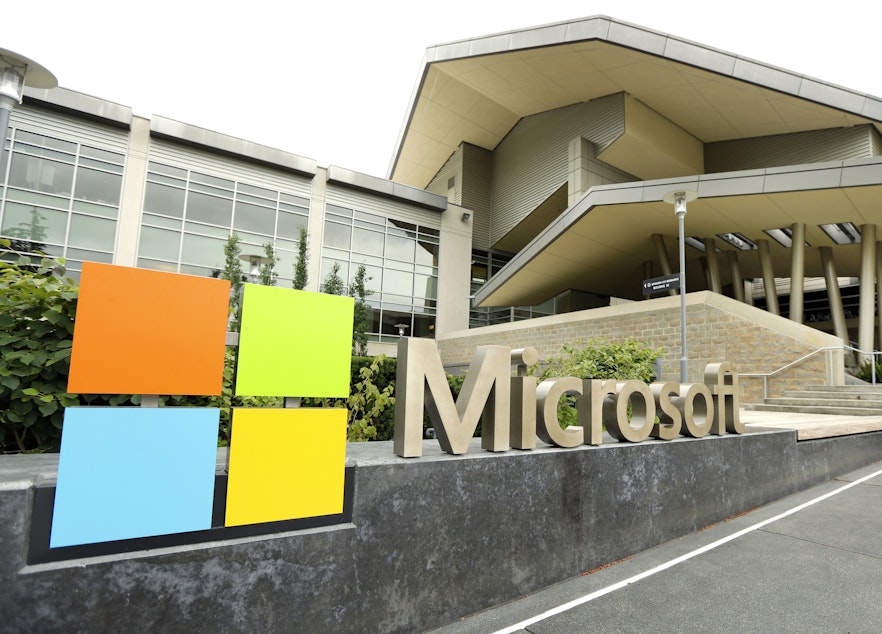Microsoft: We’re on track to stop polluting this decade. Then we’ll undo all the climate harm we’ve ever done

With one of the most aggressive crackdowns on carbon emissions in the corporate world, Microsoft says it’s on track to stop harming the global climate by the end of the decade.
The tech giant says, by 2025, its operations will use only climate-friendly, renewable energy.
By 2030, Microsoft promises to be “carbon negative,” meaning it will remove more heat-trapping carbon dioxide from the air than it or its suppliers emit.
In addition to slashing its own emissions and forcing its suppliers to halve theirs by the end of the decade, the company founded by Bill Gates and Paul Allen in 1975 says it will, over the next 30 years, undo all the harm it and its suppliers have ever done to the global climate.
The hitch: Carbon-removal technology is in its infancy, though many businesses and governments are already counting on it to solve their urgent pollution problems.
Scientists with the Intergovernmental Panel on Climate Change say any hope of limiting global warming to 1.5 degrees Celsius – often identified as the threshold between tolerable and dangerous warming – will have to rely on some degree of carbon removal as well as avoiding pollution in the first place.
Sponsored
“I don't think we or anybody should really be seeing carbon removal as a substitute at all for emissions reductions,” Microsoft ecosystem scientist Amy Luers said. “The main thing that we need to tackle this problem is to reduce our emissions.”
Microsoft has been reducing its emissions using tools such as green energy purchases, an internal carbon tax, and financial incentives for top executives to meet carbon-reduction targets.
In January, Microsoft announced it had paid for the removal of 1.4 million tons of carbon dioxide from the atmosphere, or about 11% of the pollution the company and its supply chain emit annually. Microsoft called it the world’s largest corporate procurement of carbon removal.
Overall, carbon-removal ventures remain “tiny” compared to the pollution they are intended to counteract, according to Microsoft.
Almost all of Microsoft’s carbon removals to date have come from projects to enhance or expand forests. While forests provide many benefits to people and nature, their carbon storage is far from secure.
Sponsored
Trees and other vegetation take in carbon dioxide every day, but that carbon can quickly reenter the atmosphere, for example, when a forest burns.
“You don't know for how long the carbon will be sequestered,” University of Washington Center for Environmental Politics director Aseem Prakash said. “What if there's a forest fire? What if there's a pest attack?”
Long-term carbon storage is the elusive goal of “direct air capture” technology like the Climeworks project in Iceland, which began operating in September with funding from Microsoft and other investors.
The world’s largest carbon-capture plant to date, it is expected to inhale 4,000 tons of carbon dioxide a year – as much pollution as the tailpipes of about 800 cars puff out annually – and inject it into deep underground wells.
“What it's doing is removing CO2 from the atmosphere and then taking it and putting it into the ground and essentially turning it into rock, so it stays there,” Luers said.
Sponsored
With the limitations of carbon removal, either by natural systems or machines, avoiding pollution remains the central task for a world seeking to stabilize its climate, according to Luers.
“We're not going to get there unless we reduce to near zero and really limit the amount of removal that we need because the scale of removal that we have any time in the foreseeable future is still so limited,” she said.
Microsoft is one of 845 major companies that have pledged to reduce their pollution as quickly as climate science says is necessary to avoid dangerous climate impacts, according to Simon Fischweicher of CDP. The nonprofit group has convinced hundreds of corporations to track and disclose their impacts on the climate. Very few have set out to undo their past emissions or those of their suppliers.
Fischweicher said for most big companies, the vast majority of their carbon footprint comes not from their own operations but from the suppliers and users of their products.
“It's the next step that many corporations need to be taking,” Fischweicher said of Microsoft’s comprehensive “carbon-negative” plan. “We need to go sort of full throttle, you know, pull out all the stops.”
Sponsored
“I'm actually impressed,” Prakash said of Microsoft’s carbon crackdown. “I didn't expect them to be so thorough and so transparent.”
Prakash, though, faulted Microsoft’s very profitable cloud division for continuing to sell its services to the oil and gas industry despite the company’s aggressive stance on the planet-heating emissions that come from burning such fuels.
“On one hand, you are enabling extraction of fossil fuels, and on the other hand, you're trying to remove carbon. That makes no sense,” Prakash said. “So if you're really serious about climate change, and you think this is indeed an existential threat, then they should stop doing business with fossil fuel companies.”
Activists with the nonprofit group Accountable.us criticized Microsoft and other companies that publicize their fights against climate change but behind the scenes oppose regulation that could overhaul the nation’s energy use and climate impact.
In an October 1 report, Accountable.us highlighted that executives from Microsoft and other companies with green stances sit on the board of the U.S. Chamber of Commerce. The influential lobbying group has long opposed greenhouse gas regulations and recently vowed to do “everything we can” to fight the U.S. Congress’s budget reconciliation bill with its major climate provisions.
Sponsored
On October 2, Microsoft issued a statement that it encouraged Congress to take bold action and support strong climate and clean energy provisions in US budget reconciliation and infrastructure bills.
As of October 8, Microsoft’s vice president of U.S. government affairs Fred Humphries, Jr., was listed as a director on the U.S. Chamber of Commerce website.




